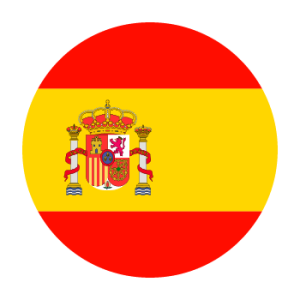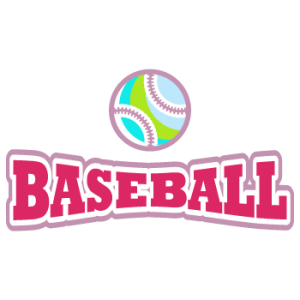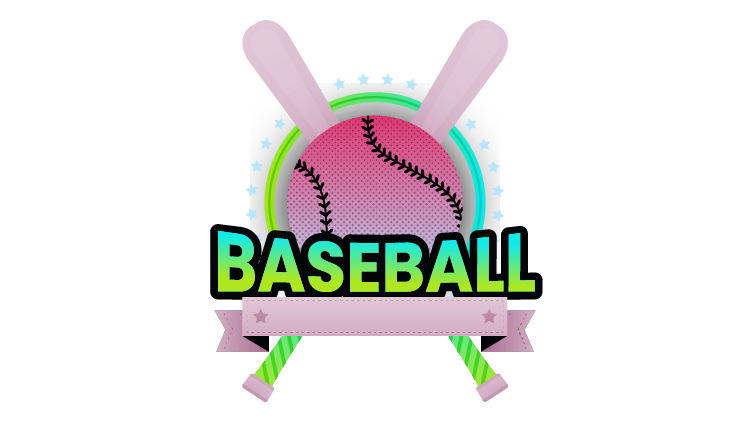When it comes to baseball, there is a language of its own that fans and players alike use to communicate. For those who speak Spanish, understanding the terms and phrases used in the game can be a bit tricky. In this blog post, we will explore how to translate baseball Spanish words to help you crack the code and fully immerse yourself in the world of baseball. So, if you’ve ever found yourself wondering what “béisbol” or “bateador” means, you’ve come to the right place. Let’s dive in and unravel the mysteries of baseball vocabulary.
Understanding the Basics of Baseball Vocabulary
Embarking on the journey of baseball terminology in Spanish begins with the fundamentals, essential for anyone looking to engage with the sport in a Spanish-speaking context. Key terms form the foundation of baseball conversations, enabling fans and players to connect over shared experiences on and off the field. For starters, “pelota” serves as the cornerstone of the game, signifying the ball that is pitched, hit, and caught. The “bate” is another crucial component, representing the bat, a tool integral to the game’s offensive aspect. Meanwhile, “campo” refers to the field, the stage where the action unfolds and dreams are pursued.
Grasping these foundational terms paves the way for a deeper understanding and appreciation of the game. As your familiarity with the sport grows, so too will your vocabulary. It’s not just about knowing the words but understanding their significance within the context of baseball. The glove, or “guante,” for instance, is not merely a piece of equipment but a player’s companion that aids in defense. Similarly, the bases – “primera base” (first base), “segunda base” (second base), “tercera base” (third base), and “home” (home plate) – are more than just markers on the field; they represent milestones and objectives for players to achieve.
This introduction to the basics is just the starting point. As one delves further into the sport, terms like “lanzador” for pitcher and “receptor” for catcher highlight the roles individuals play, each with its unique responsibilities and skills. Moreover, understanding these terms in the context of baseball’s rhythm and flow allows enthusiasts to not only follow the game but also participate in discussions, sharing insights and experiences with a growing community of Spanish-speaking fans. This exploration of baseball vocabulary is an invitation to deepen one’s connection to the game, bridging languages and cultures through the universal love of baseball.

Decoding Common Phrases Used in the Game
As we delve further into the linguistic nuances of baseball in Spanish, it becomes evident that mastering common phrases and expressions is vital for anyone seeking a comprehensive understanding of the game. Phrases such as “bola baja” for a low ball, and “fuera de juego” indicating an out of play, are pivotal for following the game’s developments. Learning expressions like “robo de base,” which signifies stealing a base, and “cambio de lanzador,” meaning a pitching change, enables fans to grasp strategic decisions and game dynamics.
Another frequently heard phrase is “toque de bola,” referring to a bunt, a tactical move that can change the course of an inning. The excitement of a “doble play” or double play demonstrates the defensive prowess of a team working in seamless coordination. These expressions, rich in imagery and history, offer a window into the strategies and quick decisions that define the sport.
Moreover, comments about player performance such as “en racha” (on a streak) or “fuera de forma” (out of form) provide insights into the narratives that unfold over a season. Understanding these phrases not only enhances one’s ability to follow the game but also enriches conversations with fellow fans, fostering a deeper connection to the baseball community.
Immersing oneself in the vocabulary of baseball in Spanish is akin to learning a dialect unique to aficionados of the game. Each term and phrase carries weight, conveying the drama, strategy, and heart that make baseball a captivating sport. As we explore these common phrases used in the game, we unlock the ability to fully engage with baseball in all its linguistic and cultural richness.
Navigating Baseball Slang: From the Dugout to the Stands
Baseball’s colorful lingo extends far beyond the basics, delving into a realm of slang that encapsulates the spirit and camaraderie of the game. Slang in baseball serves as a bridge, connecting players, coaches, and fans in a shared language that is both vibrant and nuanced. A term like “pisa y corre,” which translates to “hit and run,” captures the strategic maneuvers teams undertake to gain an advantage. Similarly, a “juego perfecto” or perfect game, is a rare feat that inspires awe, showcasing a pitcher’s dominance over opposing batters.
Delving into this specialized vocabulary reveals the intricacies of the game’s culture. Expressions such as “jonrón” (home run) echo the thrill of a powerful hit, while “esquina caliente” (hot corner), referring to third base, highlights the fast-paced action that players must navigate. These phrases offer insight into the tactical depth and historical context that enrich the experience of watching and discussing baseball.
Slang also reflects the informal interactions among the baseball community. Phrases like “lanzador de humo” (literally, “smoke thrower”) for a pitcher with a fast fastball and “madera” (wood) for the bat emphasize the physical and strategic elements that players master. Understanding these terms allows fans to gain a closer look into the player dynamics and the game’s subtleties.
The language of baseball, steeped in tradition and evolving with each season, serves as a testament to the game’s enduring appeal. By exploring the slang from the dugout to the stands, one can appreciate the rich tapestry of expressions that make baseball a unique and captivating sport. This exploration of slang is not just about adding words to your vocabulary but about connecting with the heart and soul of baseball, celebrating its stories and legends in every pitch, hit, and catch.

Translating Baseball Equipment and Apparel Terms
In the world of baseball, every piece of equipment and apparel carries its own importance and identity, symbolized by specific Spanish terms that enrich the understanding of the game. “Guante,” the Spanish word for glove, is essential for players to catch the ball effectively, a fundamental part of baseball’s defense strategy. The “casco,” or helmet, serves as critical protection for batters, safeguarding them from high-velocity pitches. Understanding these terms not only helps in identifying the various pieces of equipment but also in appreciating the role each plays in the safety and performance of the athletes.
The “uniforme,” translating directly to uniform, represents more than just attire; it signifies a team’s identity and unity. Each “uniforme” is designed with team colors and logos, embodying the spirit and pride of the players and fans alike. The term “bate,” meaning bat, highlights the offensive tool central to scoring runs, showcasing the skill and power of the batter. Additionally, “pelotas,” or balls, are at the heart of every pitch, hit, and play, underscoring the game’s essence.
In the context of apparel, “calzado deportivo” refers to the cleats worn by players, providing the necessary traction and mobility on the field’s surface. Gloves for batting, known as “guantes de bateo,” help improve grip and protect the hands during powerful swings. These terms not only facilitate a deeper comprehension of the game’s physical components but also allow fans and players to discuss baseball with a richer vocabulary, bridging language gaps and enhancing the shared experience of this beloved sport. Through these translations, the intricacies of baseball equipment and apparel become accessible, inviting more people to engage with and enjoy the game from a knowledgeable standpoint.
The Role of Culture in Baseball Language
Exploring the cultural context within which baseball terms are used in Spanish-speaking countries unveils a rich tapestry of linguistic diversity. Across regions, the language of baseball absorbs local expressions and slang, giving each place a unique voice within the sport. For example, in the Caribbean, the fervor for baseball is woven into everyday language, with terms and phrases reflecting the local dialect and historical influences. In contrast, Spanish speakers from Mexico might use different expressions or even different words entirely, illustrating the sport’s adaptability to its cultural surroundings.
Understanding these cultural nuances is key to fully appreciating the global nature of baseball. It allows fans and players to connect on a level that goes beyond the basic rules of the game, into a deeper appreciation of its role in different societies. This linguistic journey is not just about learning terms but about experiencing the way baseball serves as a bridge between cultures, fostering a sense of community and shared passion.
The Spanish language, with its regional variations and expressions, enriches the global conversation about baseball. By engaging with the sport’s language in its various forms, fans can discover the unique stories and traditions that baseball has inspired worldwide. This cultural exploration adds a layer of enjoyment and understanding for those passionate about the game, offering insights into the ways in which baseball transcends borders and unites people through a common language and love for the sport. Read about the Olympic game translation.
Frequently Asked Questions
Why is it important to translate baseball terms from Spanish to English accurately?
Accurate translation of baseball terms from Spanish to English is important to ensure clear communication among players, coaches, and fans, and to maintain the integrity of the game by conveying the correct strategies and rules.
What are some common baseball terms in Spanish and their English equivalents?
Common baseball terms in Spanish include “bateador” (batter), “lanzador” (pitcher), “cuadro interior” (infield), “jardinero” (outfielder), and “cuenta” (count).
How can cultural nuances affect the translation of baseball terms from Spanish to English?
Cultural nuances can affect translation as certain terms may have specific connotations or usage in Spanish-speaking countries. Understanding the context and local baseball culture helps in choosing the most appropriate English equivalent.
What resources can translators use to ensure accurate translation of baseball terms?
Translators can use resources such as bilingual sports dictionaries, glossaries specific to baseball, online forums with sports enthusiasts, and official MLB terminology guides to ensure accuracy in translation.
How do you handle slang or informal baseball terms when translating from Spanish to English?
When translating slang or informal baseball terms, it’s essential to find equivalent expressions that capture the same casual tone and meaning in English. Consulting with native speakers and context analysis can aid in finding the best translation.


